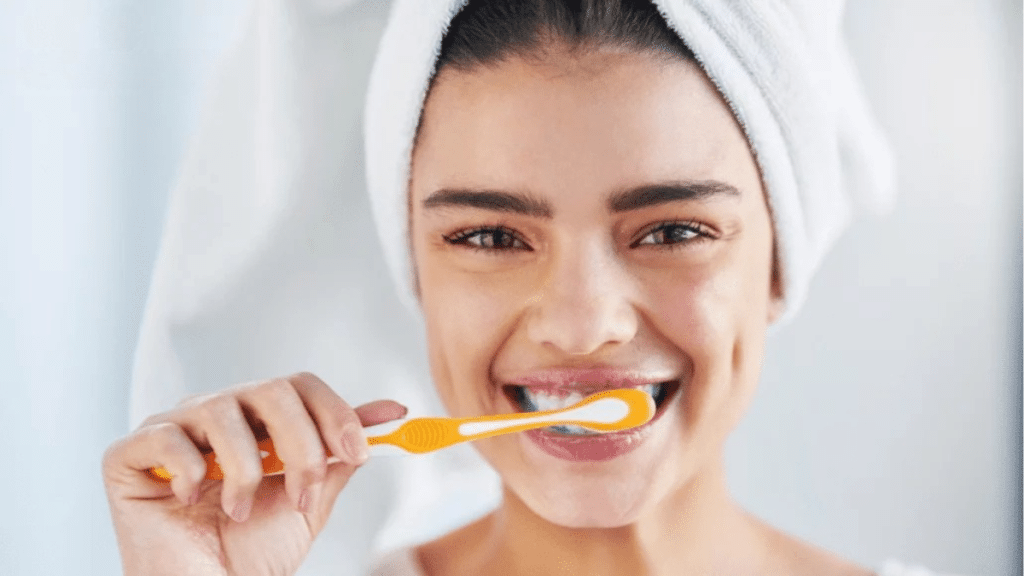You brush your teeth every morning and night. You floss sometimes. You even rinse with mouthwash. But are you truly covering all the essentials? For millions of Americans, the answer is no. While brushing might seem like a foolproof task, experts say there are two critical steps that routinely get skipped — and they could be the difference between a healthy smile and a dental bill.
In this week’s spotlight, we uncover two commonly overlooked habits that dentists wish everyone followed: using fluoride toothpaste correctly and brushing your tongue. Both steps are simple to incorporate and make a powerful difference in preventing decay, freshening breath, and supporting long-term oral health.
The Power of Fluoride Toothpaste: Are You Maximizing Its Benefits?
Fluoride is more than just a buzzword on your toothpaste tube. It’s a naturally occurring mineral that strengthens enamel and fights cavities, forming the frontline defense in modern dental care.
The Science Behind Why Fluoride Works
Fluoride actively remineralizes enamel, repairs early decay, and helps your teeth resist acidic attacks from sugars and plaque. According to the American Dental Association (ADA), fluoride toothpaste is a cornerstone of preventive care — especially vital for children and adults at high risk of decay.
Over time, daily exposure to fluoride creates a stronger, more decay-resistant surface on the teeth. This helps delay or avoid cavities, saving patients from more invasive dental procedures like fillings, crowns, or root canals. Without fluoride, teeth are more vulnerable to acid erosion from foods, drinks, and bacterial plaque.
Using Fluoride Toothpaste Correctly: A Quick Checklist
Using fluoride toothpaste is effective, but only if used properly. Here’s what most people get wrong:
- Dosage matters: Use a pea-sized amount for adults, a rice-sized smear for toddlers.
- Skip the rinse: Avoid rinsing right after brushing — let fluoride linger.
- Time it right: Brush for a full two minutes to maximize exposure.
- Brush twice a day: Ideally in the morning and before bed to keep fluoride active in your mouth for longer periods.
Neglecting these steps? You may be brushing, but you’re not protecting. Proper technique allows fluoride to bind effectively to enamel and fortify weak spots before decay sets in.
The Forgotten Step: Brushing Your Tongue
Even if your teeth are gleaming, your tongue can harbor bacteria that sabotage your breath and oral health.
Why the Tongue is a Bacterial Haven
With its ridged surface and moisture, the tongue is the perfect breeding ground for bacteria that emit foul odors and contribute to plaque. According to the Cleveland Clinic, this buildup can lead to bad breath (halitosis), dull taste buds, and in some cases, even affect overall gut health due to swallowed bacteria.
The tongue can trap dead cells, leftover food particles, and fungi — all of which can foster microbial overgrowth and contribute to periodontal issues if left untreated. Regular tongue cleaning helps reduce this bacterial load and promotes a healthier mouth microbiome.
How to Clean Your Tongue Effectively
- Use your toothbrush or a dedicated tongue scraper.
- Start at the back and sweep forward with gentle pressure.
- Rinse thoroughly to remove loosened debris and bacteria.
- Clean your tongue at least once a day, preferably during your evening routine when bacteria have accumulated.
This one-minute habit can yield dramatic improvements in breath freshness, reduce buildup on the tongue’s surface, and even make your toothpaste taste more pleasant during use.
Combine and Conquer: Why These Two Habits Work Best Together
Too often, brushing routines focus only on the obvious. But when paired together, fluoride toothpaste and tongue brushing tips create a more complete, dentist-approved strategy. You’ll reduce cavity risk, fight off odor-causing bacteria, and promote a noticeably cleaner mouth.
Think of fluoride toothpaste and tongue brushing as a one-two punch. Fluoride strengthens and protects your teeth, while tongue brushing removes hidden sources of bacteria that undermine that effort. Together, they set a stronger foundation for long-term oral health — especially when supported by consistent brushing technique and professional checkups.
Beyond the Basics: More Tips to Elevate Your Oral Routine
Level up your brushing with these additional expert-approved habits:
Choose a Soft-Bristled Toothbrush
Gentle on enamel and gums, soft bristles reduce damage while cleaning effectively. Overly stiff bristles can contribute to enamel wear and gum recession over time.
Replace Your Toothbrush Often
Change it every 3 months or when bristles fray. A worn brush won’t clean well and may harbor bacteria. If you’ve been sick recently, it’s a good idea to swap it out sooner.
Floss Daily — No Exceptions
It’s the only way to remove plaque from between teeth where your brush can’t reach. Flossing also helps reduce inflammation and bleeding gums, key early signs of gum disease.
Use an Alcohol-Free Mouthwash
This helps lower bacteria levels without drying out your mouth or interfering with fluoride. Dry mouth can actually promote bacterial growth, so keeping moisture balanced is essential.
Stay Hydrated Throughout the Day
Water helps wash away food particles and keeps your saliva flowing — your body’s natural defense against plaque and bacteria.
Closing Thoughts: Small Habits, Lasting Impact
Your brushing routine may seem simple, but neglecting key elements can undermine your effort. Small habits — like using fluoride toothpaste properly and cleaning your tongue — can dramatically enhance your dental health over time.
These changes don’t require expensive products or complicated techniques. They simply demand consistency and a willingness to look beyond the basics. By treating your tongue with the same care as your teeth and applying fluoride mindfully, you’re setting yourself up for better checkups and a more confident smile.
So next time you’re in front of the mirror, ask yourself: Are you brushing your teeth, or are you really cleaning your mouth?
Need help upgrading your routine? Talk to your dentist about techniques and products tailored to your smile. And don’t wait until problems arise — proactive care always costs less than corrective treatment.
